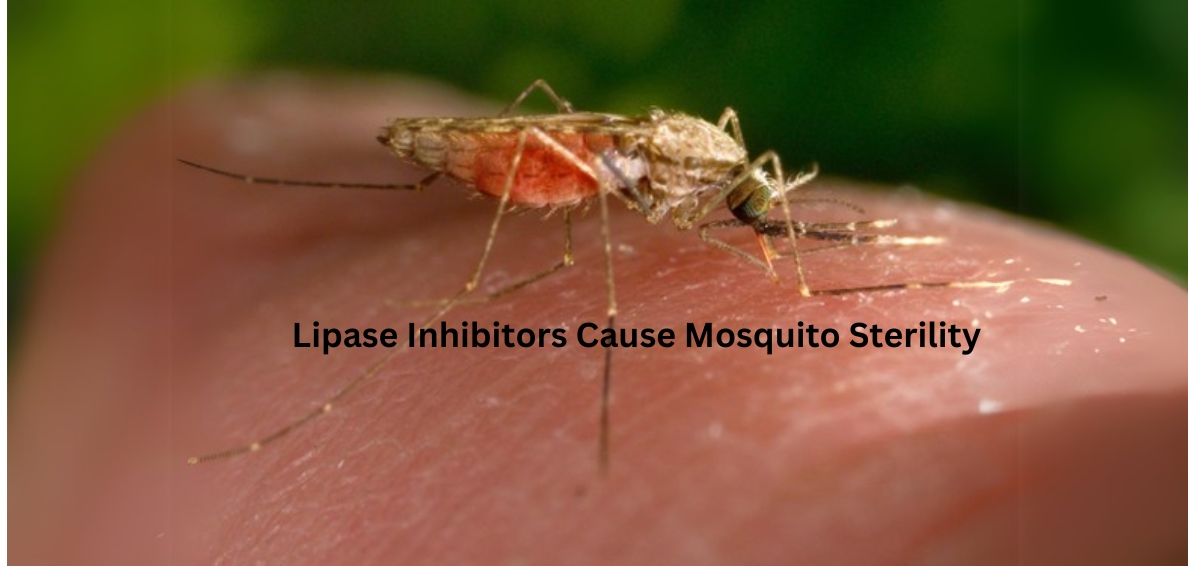- Courses
- GS Full Course 1 Year
- GS Full Course 2 Year
- GS Full Course 3 Year
- GS Full Course Till Selection
- MEP (Mains Enrichment Programme) Data, Facts
- Essay Target – 150+ Marks
- Online Program
- GS Recorded Course
- NCERT (Recorded 500+ Hours)
- Polity Recorded Course
- Geography Recorded Course
- Economy Recorded Course
- AMAC Recorded Course
- Modern India, Post Independence & World History
- Environment Recoded Course
- Governance Recoded Course
- Science & Tech. Recoded Course
- International Relations and Internal Security Recorded Course
- Disaster Management Module Course
- Ethics Recoded Course
- Current Affairs Recoded Course
- CSAT
- 5 LAYERED ARJUNA Mentorship
- Public Administration Optional
- ABOUT US
- OUR TOPPERS
- TEST SERIES
- FREE STUDY MATERIAL
- VIDEOS
- CONTACT US
Lipase Inhibitors Cause Mosquito Sterility: Study Findings (2025)
Lipase Inhibitors Cause Mosquito Sterility: Study Findings (2025)
06-01-2025

- In January 2025, A study, published in the journal PLOS Biology, discovered, how lipid metabolism (the breakdown of fats) in Anopheles gambiae mosquitoes, the main species that spreads Plasmodium falciparum (the parasite that causes malaria), can be targeted to control their reproduction.
- The research showed that when lipase inhibitors (substances that block the breakdown of fats) were used, female mosquitoes became sterile (not able to produce babies), and their embryos failed to develop, leading to sterility.
- An embryo is a group of cells that develops from a fertilized egg that has implanted in the uterus and will eventually become a baby.
Key Findings:
-
Impact on Lipid Transport and Mosquito Reproduction:
- Lipophorin (Lp) is a protein that helps transport lipids (fats) inside mosquitoes.
- The study found that disrupting this process by using lipase inhibitors impacted the reproduction of female mosquitoes.
- When female mosquitoes were exposed to lipase inhibitors, the fat inside their bodies couldn't break down properly.
- This stopped the embryos they produced from developing and led to sterility.
-
Effect on Embryo Development:
- Lipolysis is the process by which fats are broken down for energy. Without this process, the embryos developed well at first but couldn’t finish developing because they didn’t have enough energy.
- This resulted in embryo death before they could hatch.
- Lipophorin and vitellogenin (Vg) are two proteins that are important for delivering lipids to the eggs. When lipolysis is blocked, the lack of these fats stops the eggs from developing properly, leading to the embryos dying before they hatch.
-
Effects of Silencing Triglyceride Lipase:
- Triglyceride lipase is an enzyme that helps break down fats in mosquitoes for energy. The study showed that when this enzyme was “silenced” (turned off), it led to fewer eggs being laid by female mosquitoes.
- When triglyceride lipase was silenced, the fat levels in the midgut and fat body of the mosquitoes increased.
- However, there was a sharp drop in fat levels in the ovaries, where eggs are formed, causing the embryos to lack energy and die.
- This experiment showed that less fat in the ovaries led to fewer larvae emerging from the eggs, meaning the mosquitoes couldn’t reproduce properly.
-
Effect on Embryo Metabolism:
- The metabolic profiles (chemical processes that generate energy) of embryos from mosquitoes with silenced triglyceride lipase were different from those of normal mosquitoes.
- In normal mosquitoes, energy compounds increased over time.
- But in the lipase-depleted mosquitoes, many of these compounds were much lower, indicating the embryos didn’t have enough energy to survive.
- Gene changes: After 38 hours of egg-laying, many genes were either activated or turned off in the mosquitoes with silenced triglyceride lipase, showing that lipids (fats) are needed for the embryos to develop properly.
-
Effect of Orlistat (Lipase Inhibitor):
- Orlistat, a drug that inhibits lipase (an enzyme that breaks down fat), was tested on the mosquitoes.
- The study showed that when adult female mosquitoes were treated with orlistat before they took a blood meal, the embryos failed to develop and died.
- This confirmed that using lipase inhibitors could effectively block embryo development and cause sterility in mosquitoes.
Field Application and Implications for Mosquito Control
-
Delivery of Lipase Inhibitors:
- In nature, mosquitoes absorb chemicals like insecticides when they land on treated surfaces (such as bed nets).
- The researchers tested this by applying orlistat to surfaces mosquitoes landed on, before they took a blood meal.
- This method reduced the number of larvae that emerged from the eggs, meaning fewer mosquitoes were able to develop and reproduce.
-
Potential for Reducing Mosquito Populations:
- The study suggests that lipase inhibitors could be a new method for controlling mosquito populations, especially in areas where malaria is common.
- If this method is applied on a large scale, it could help reduce the number of mosquitoes, and as a result, lower malaria transmission in affected areas.
-
Promising Tool for Malaria Control:
- The findings suggest that lipase inhibitors could help stop mosquitoes from reproducing, thus lowering the mosquito population.
- This could reduce the number of mosquitoes that can spread malaria, making it a useful tool for controlling the disease.
-
Effectiveness in the Field:
- When tested in the field, the results showed that using orlistat significantly reduced mosquito larvae survival, confirming the potential for lipase inhibitors to be used in real-world mosquito control.
Study Methodology
- The researchers used genetic techniques to “silence” (turn off) the gene for triglyceride lipase in mosquitoes. This helped them observe the effects on mosquito egg-laying and embryo survival.
- They treated mosquitoes with orlistat, a lipase inhibitor, and observed its effects on the embryos that developed from the eggs.
- They also examined the metabolic profiles of embryos and tracked larvae survival to understand how fat breakdown affects mosquito reproduction.
Conclusion
This study demonstrates the importance of lipid metabolism in mosquito reproduction and shows how targeting this process with lipase inhibitors can lead to sterility in mosquitoes. By preventing the breakdown of fats, female mosquitoes cannot produce healthy embryos, and the population of mosquitoes can be reduced.
|
Also Read |
|



